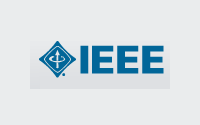Driven by mobile access, increased demand for video services, and M2M communications, IP traffic will triple between 2014 and 2019, when it will reach a record 2 zettabytes, according to the 10th annual Cisco Visual Networking Index (VNI) Forecast. This equates to a compound annual growth rate (CAGR) of 23 percent and marks the first global CAGR increase in consecutive VNI forecasts in nearly a decade (e.g., last year’s projected CAGR for 2013 – 2018 was 21 percent).
 Cisco predicts that global IP traffic will reach 168 exabytes per month by 2019, up from 59.9 exabytes per month in 2014. Some highlights of the report::
Cisco predicts that global IP traffic will reach 168 exabytes per month by 2019, up from 59.9 exabytes per month in 2014. Some highlights of the report::
“It took 32 years – from 1984 to 2016 – to generate the first zettabyte of IP traffic annually. However, as this year’s Visual Networking Index forecasts, it will take only three additional years to reach the next zettabyte milestone when there will be more than 2 zettabytes of IP Traffic annually by 2019. As consumers, businesses and societies alike head towards the Digital Era with the Internet of Everything gaining momentum, VNI is even more relevant now in its 10th year than it was in its first. For our customers and the industry ecosystem as whole, we look forward to continuing to report on these trends, the challenges they bring, and the immense opportunities ahead,” stated Doug Webster, Vice President of Service Provider Products and Solutions Marketing, Cisco.
 Cisco predicts that global IP traffic will reach 168 exabytes per month by 2019, up from 59.9 exabytes per month in 2014. Some highlights of the report::
Cisco predicts that global IP traffic will reach 168 exabytes per month by 2019, up from 59.9 exabytes per month in 2014. Some highlights of the report::- In 2014, there were 2.8 billion Internet users, or 39 percent of the world’s population of 7.2 billion. By 2019, there will be about 3.9 billion Internet users, or 51 percent of the world’s projected population of 7.6 billion
- In 2019, there will be 24 billion networked devices/connections.
- There will be 3.2 networked devices/connections per capita by 2019, up from 2 per capita in 2014.
- Globally, the average fixed broadband speed will increase two-fold from 20.3 Mbps in 2014 to 42.5 Mbps in 2019.
- Busy-hour (or the busiest 60‑minute period in a day) Internet traffic increased 34 percent in 2014, compared with 26 percent growth in average traffic.
- Busy-hour Internet traffic will increase by a factor of 3.4 between 2014 and 2019, while average Internet traffic will increase 2.8-fold.
- Busy-hour Internet traffic will reach 1.7 petabits per second (Pbps) by 2019.
- Content delivery networks will carry over half of Internet traffic by 2019. Globally, Sixty-two percent of all Internet traffic will cross content delivery networks by 2019 globally, up from 39 percent in 2014. IP video will account for 80 percent of all IP traffic by 2019, up from 67 percent in 2014.
- By 2019, more than 14 percent of monthly IP traffic will derive from cellular connections, and 53 percent of monthly IP traffic will come from Wi-Fi connections globally, making differentiated and monetizable mobile strategies more important for all service providers.
- Wi-Fi and mobile connected devices will generate 67 percent of IP traffic by 2019 – Wi-Fi: 53 percent and cellular: 14 percent – compared with fixed traffic, which will account for 33 percent of overall traffic.
- In 2014, fixed traffic accounted for 54 percent of IP traffic, while Wi-Fi accounted for 42 percent and cellular 4 percent.
- Connected Health consumer segment will represent the fastest M2M connections growth at 8.6-fold (54 percent CAGR) from 2014 to 2019.
- By 2019, the highest traffic-generating countries will be the U.S. (45.7 exabytes/month) and China (21.9 exabytes/month).
- By 2019, HD and ultra HD Internet video will make up 63 percent of Internet video traffic.
“It took 32 years – from 1984 to 2016 – to generate the first zettabyte of IP traffic annually. However, as this year’s Visual Networking Index forecasts, it will take only three additional years to reach the next zettabyte milestone when there will be more than 2 zettabytes of IP Traffic annually by 2019. As consumers, businesses and societies alike head towards the Digital Era with the Internet of Everything gaining momentum, VNI is even more relevant now in its 10th year than it was in its first. For our customers and the industry ecosystem as whole, we look forward to continuing to report on these trends, the challenges they bring, and the immense opportunities ahead,” stated Doug Webster, Vice President of Service Provider Products and Solutions Marketing, Cisco.
















